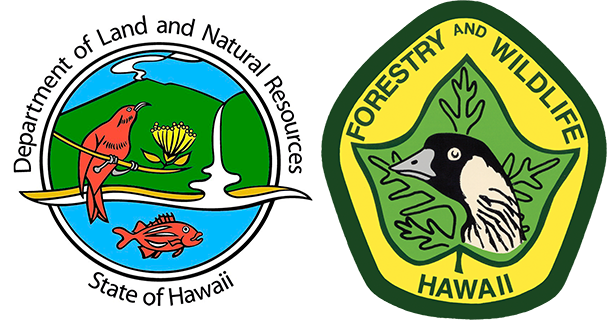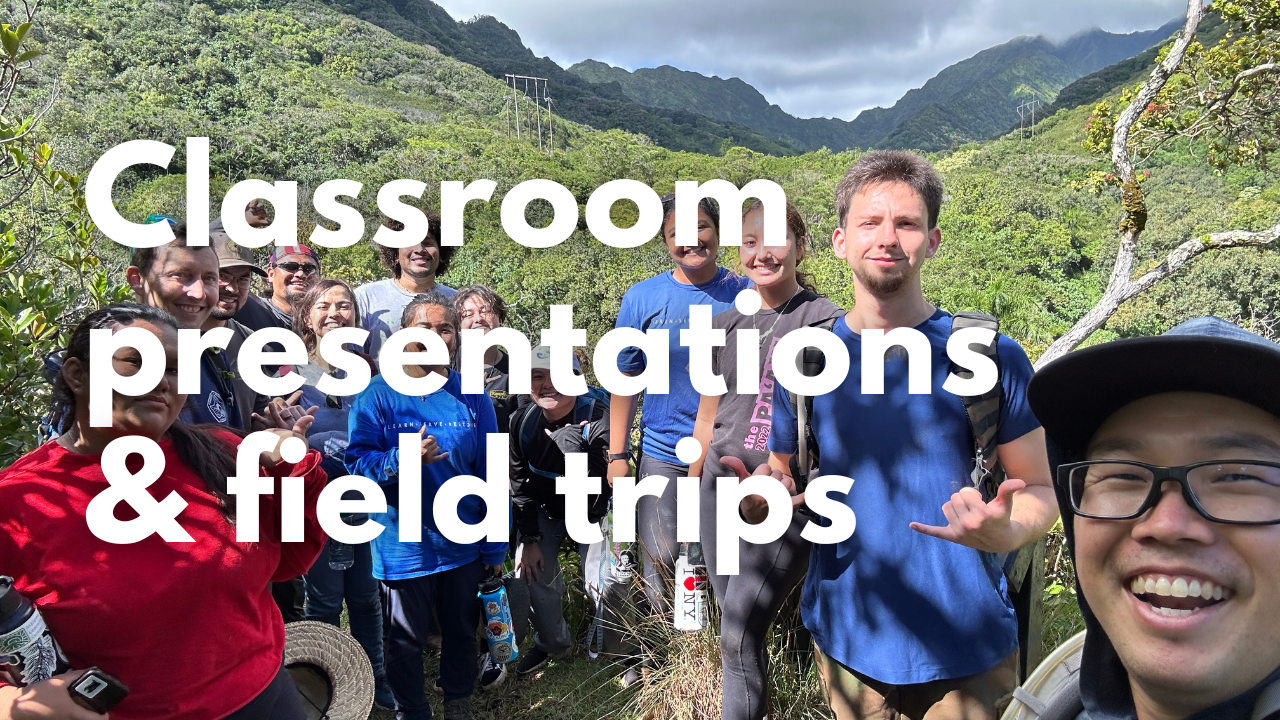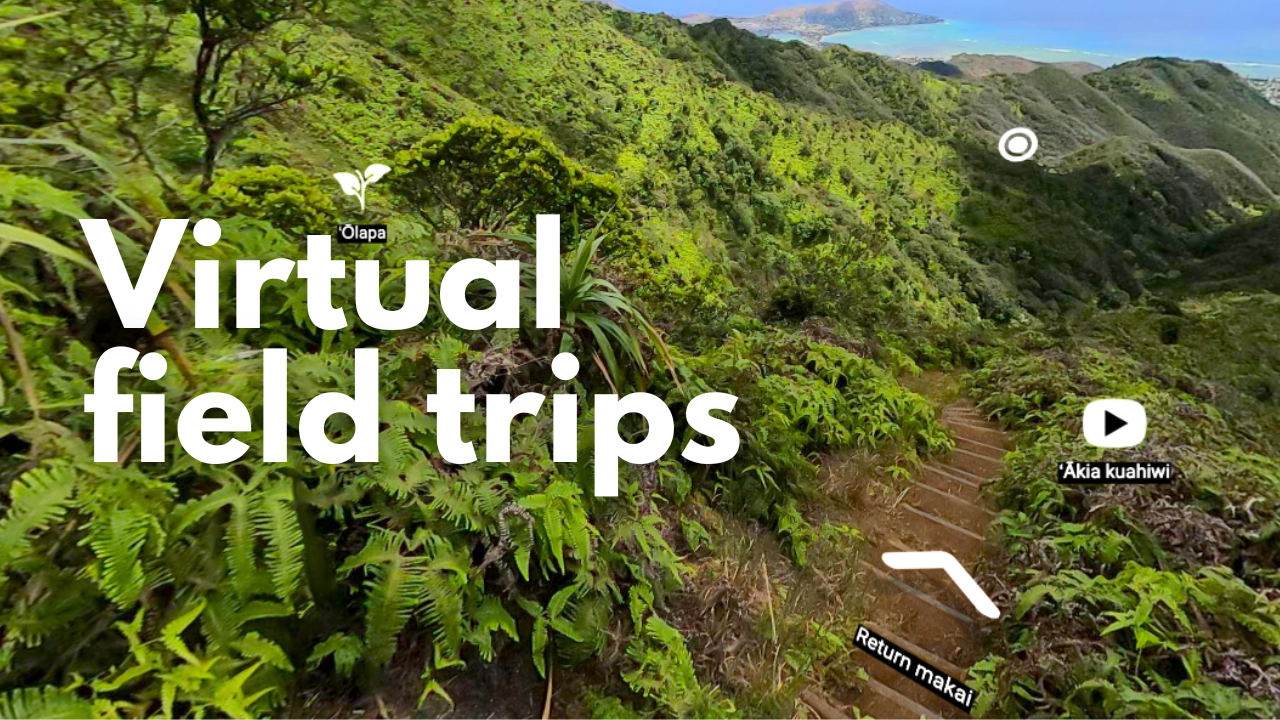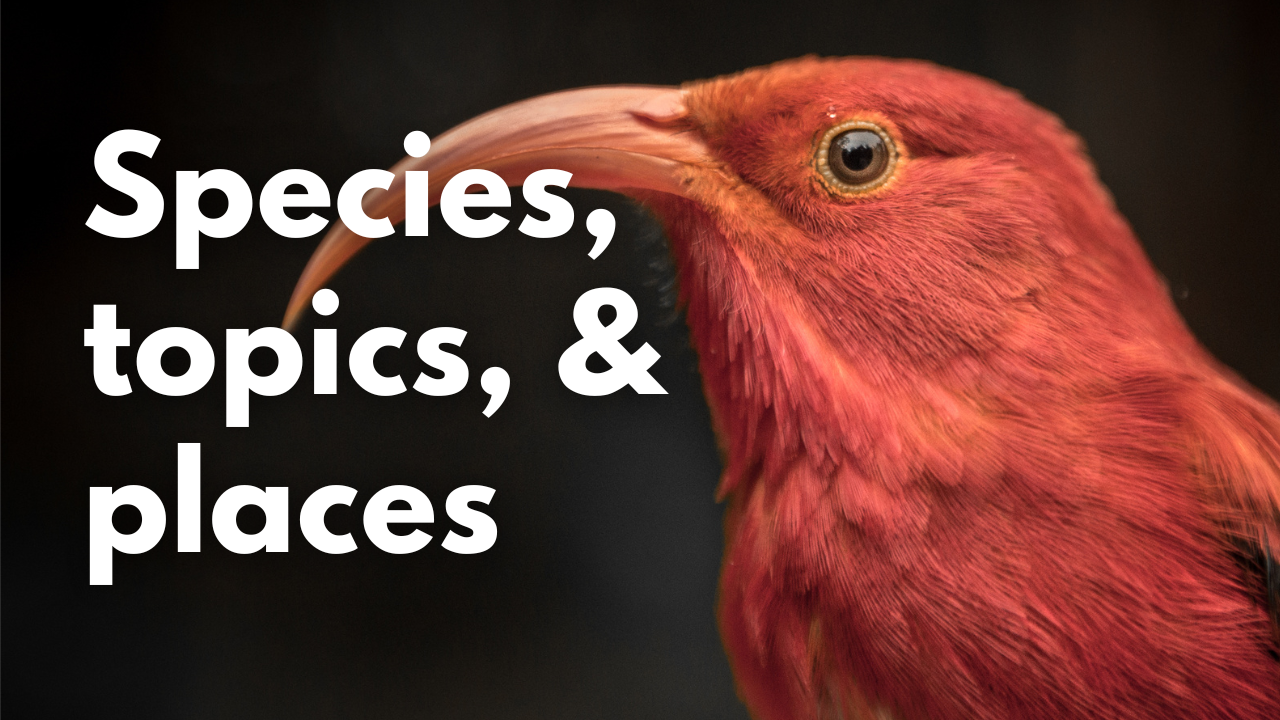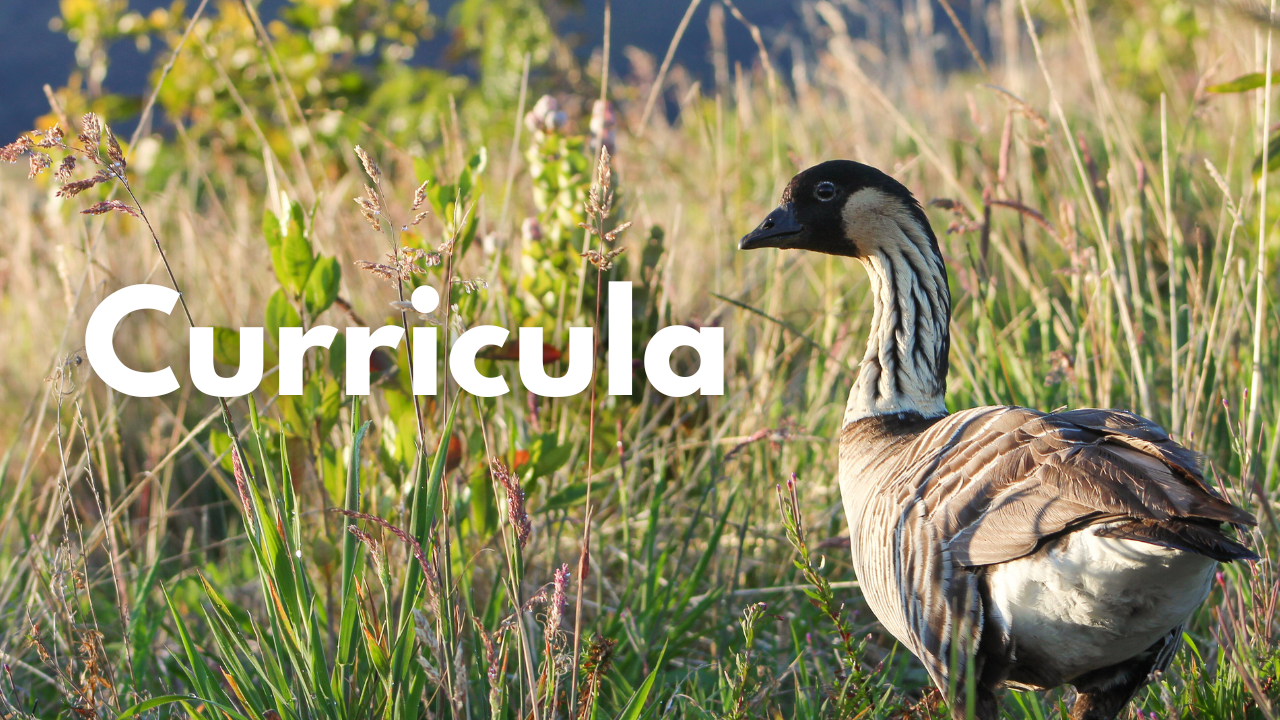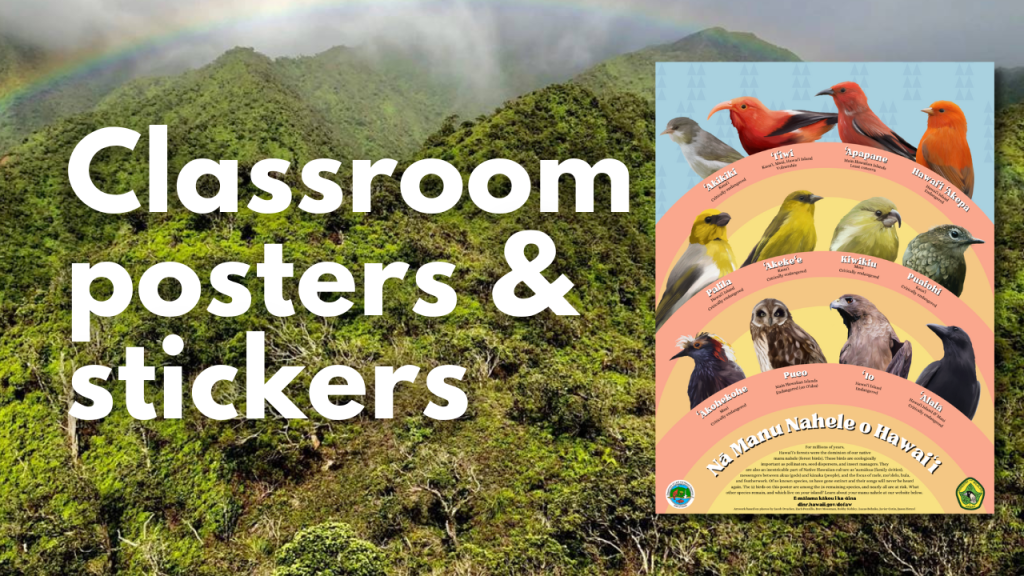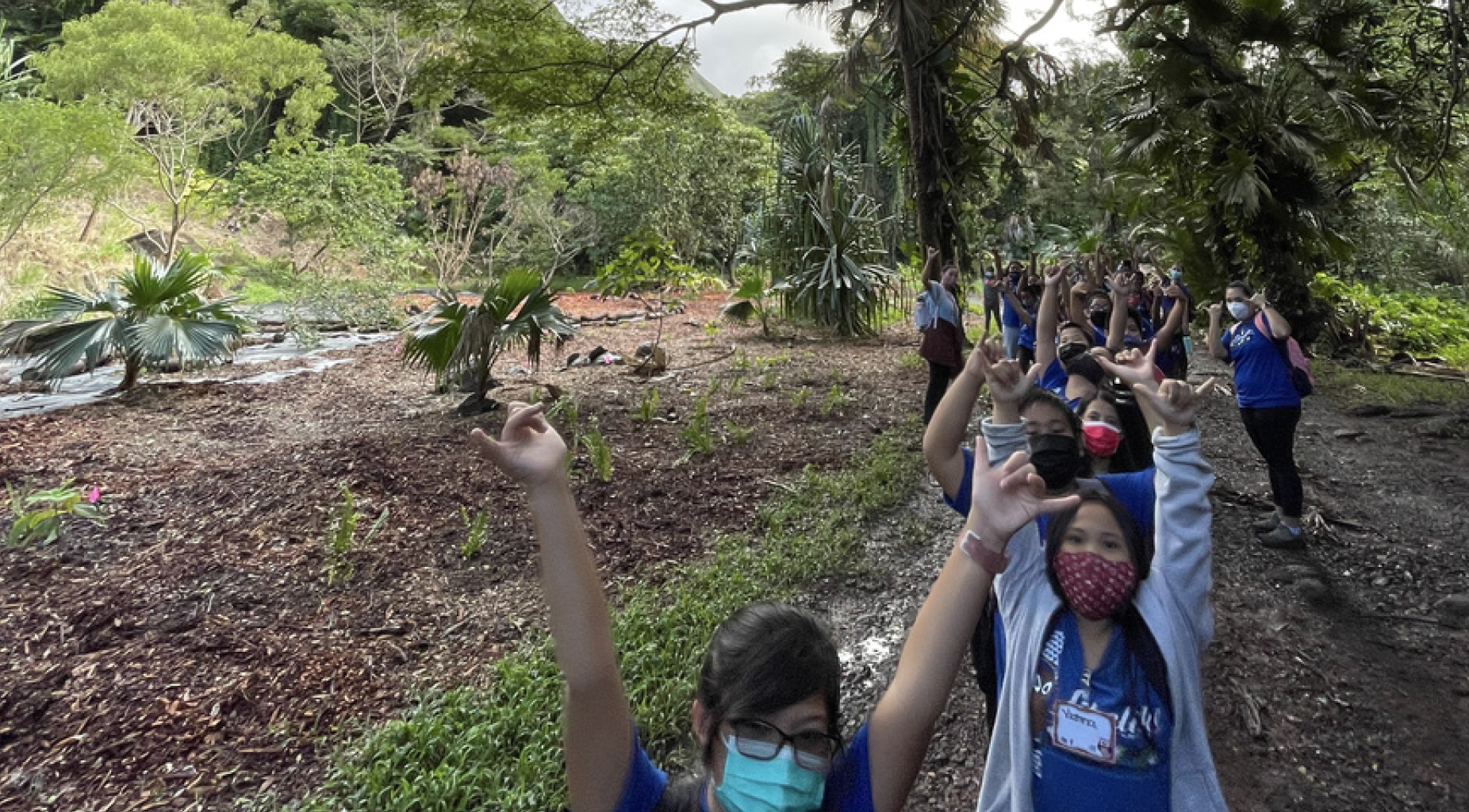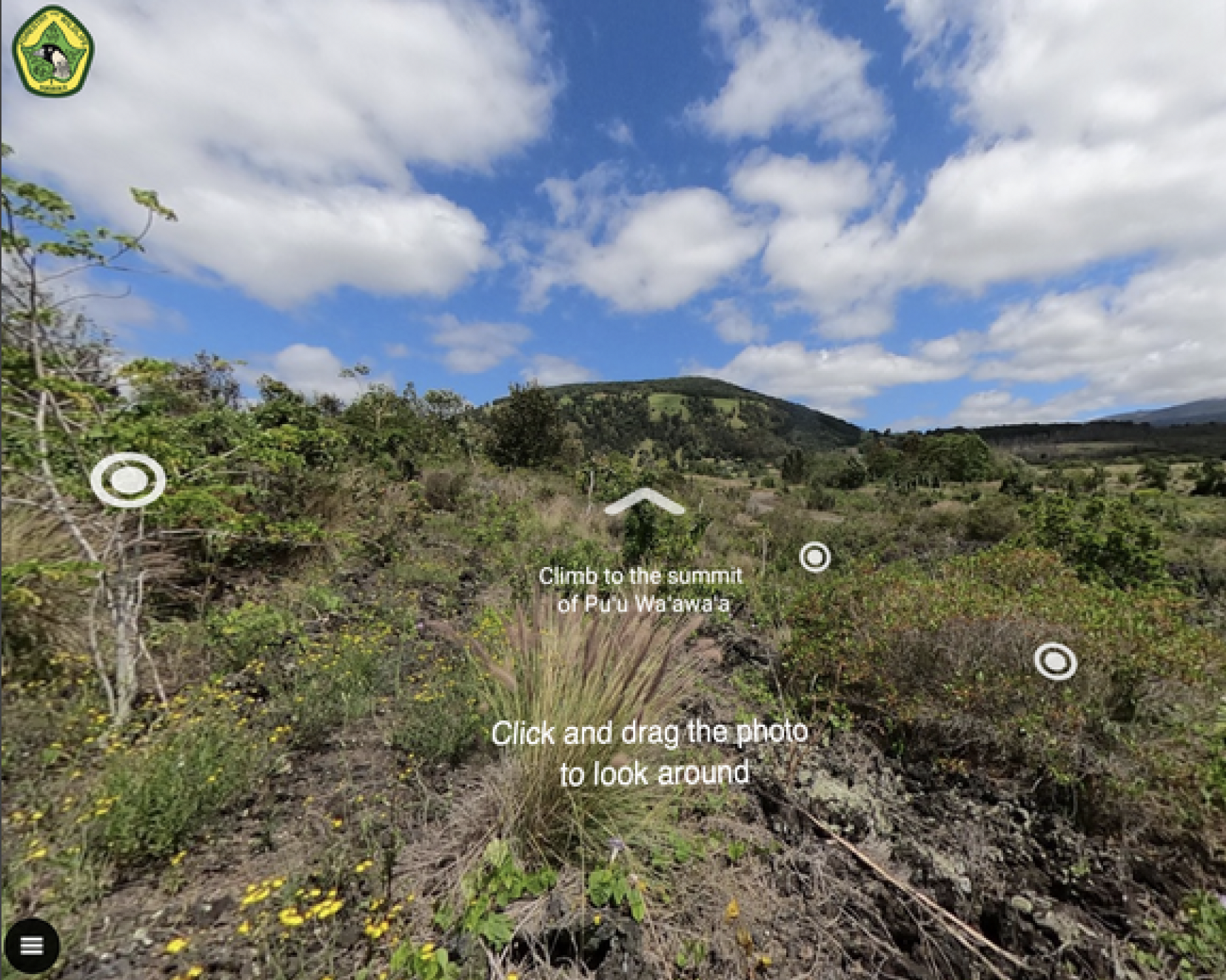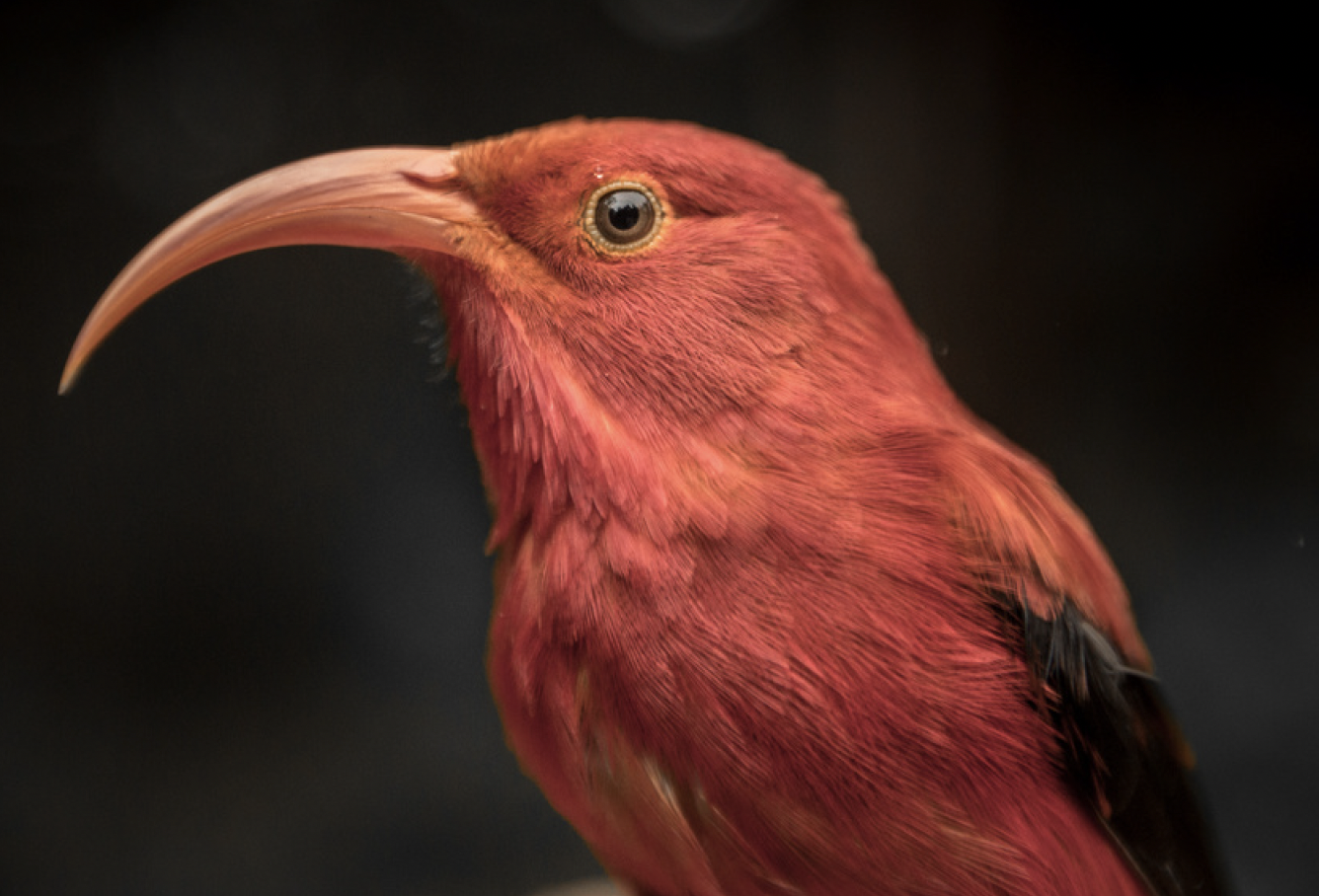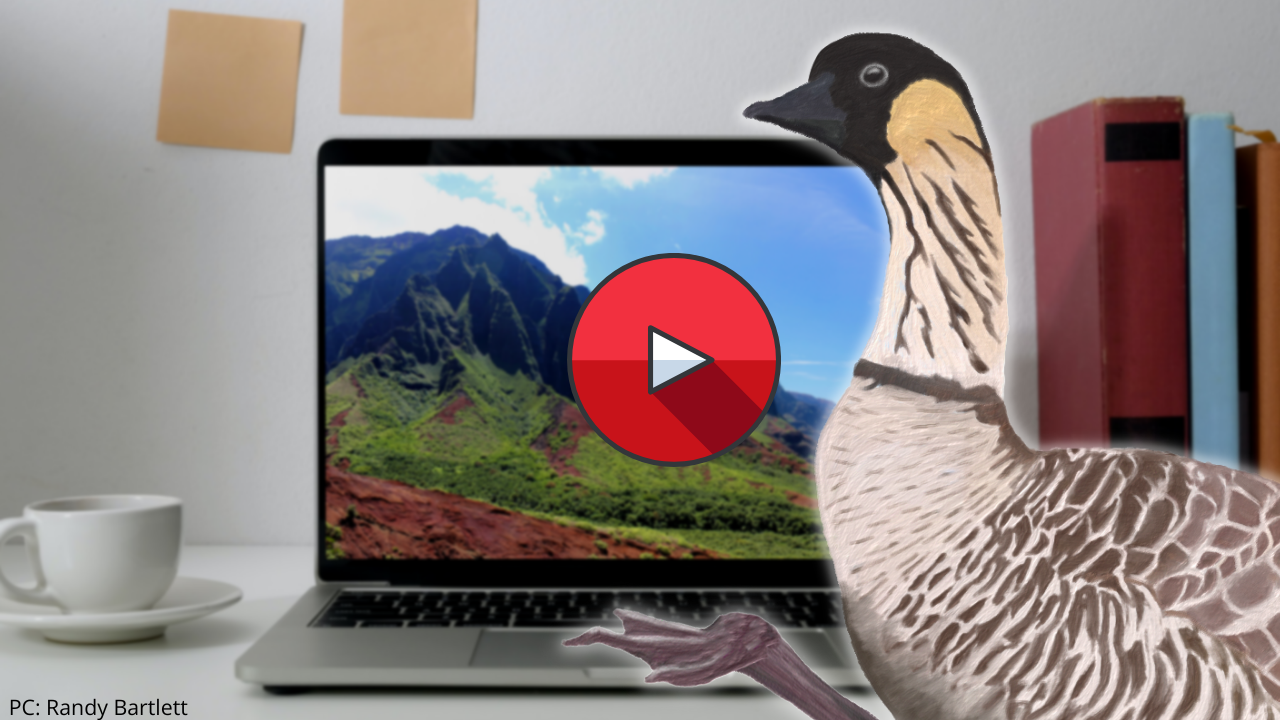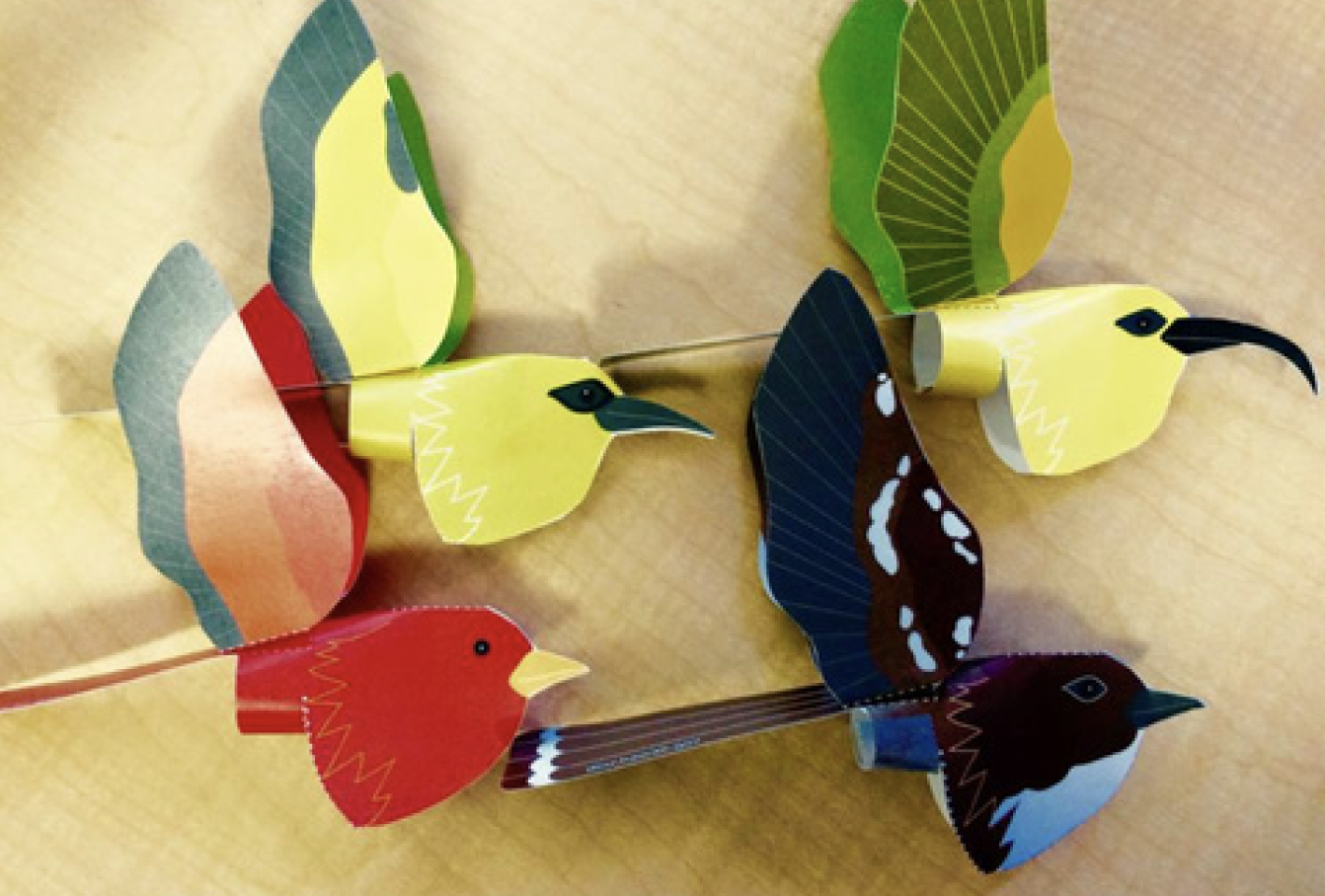Education
 Forestry & Wildlife recognizes the critical role of environmental education in engaging students and residents with the natural and cultural resources of Hawaiʻi. We provide the resources below in order to help you learn or to help you teach others about what makes Hawai‘i, Hawai‘i.
Forestry & Wildlife recognizes the critical role of environmental education in engaging students and residents with the natural and cultural resources of Hawaiʻi. We provide the resources below in order to help you learn or to help you teach others about what makes Hawai‘i, Hawai‘i.
Quick links
Still hungry for information? Check out our pages on our Project Learning Tree professional development program, Hawai’i’s conservation leaders, our Wahi Pana Essay Contest, and our Oʻahu Adopt a Forest program.
Educators who want to receive updates on new educational opportunities and products can sign up for our Educator Bulletin. We won’t spam you and will send occasional emails about new posters, virtual field trips, paper crafts, or other products for your classroom.
Classroom Presentations and Field Trips
Our outreach staff are available to visit your classroom (in person or virtually) to talk about topics including wildlife, native plants, invasive species, watersheds, wildfire, hunting, and more. We can also work with you to find field trip opportunities, including guided hikes or service learning activities. Use our contact form to connect with us to request a presentation or service trip.
Department of Education teachers can also schedule events with us through the ClimbHI.org education portal.
Explore Hawaiʻi From Your Classroom with Virtual Field Trips
We’ve developed a number of virtual field trips in native ecosystems and special places that you and your students can explore at your own pace. Each tour uses a series of 360˚ photos that allow you to walk through and look around the areas we manage. Within each 360˚ photo there are hotspots users can click to learn more about plants, animals, ecology, and history. Project the virtual field trip on a big screen to take a trip as a class, or let students explore on their own devices. Our tours are at dlnr.hawaii.gov/dofaw/virtual.
Species Profiles, Conservation Topics, and Place Pages
Use our content as supporting materials in creating your own lesson plans, or direct your students to our pages for supporting reference materials when assigning research projects. Our reference materials include:
- Species profiles that you and your students can use when researching native birds, plants, and insects, as well as invasive species
- Conservation Topics StoryMaps that dive deeper into the science of topics like watersheds, climate change, fencing, and more
- Place pages that describe specific Natural Area Reserves, Forest Reserves, Wildlife Sanctuaries, and Game Management Areas across the state.
You can find these resources at dlnr.hawaii.gov/dofaw/education/learn/.
Educational Videos: Hawaiʻi-based Documentaries and More
We and our conservation partners have produced educational videos ranging from 30 seconds to hour-long documentaries about natural and cultural resources in Hawaiʻi. We produce an ʻĪke Kaiāulu series that shares community and cultural perspectives on natural resources, and a Conservation Stories series that provides a brief look at our field projects to protect natural resources. We also support a Student Video series through the ʻŌlelo Youth XChange Video Competition, and have a Staff Career series with Forestry & Wildlife experts talking about their careers and how they came to be people who help protect Hawaiʻi.
We also feature locally-produced documentaries from DLNR and partners, including the award-winning Kāhuli and the Emmy-winning Saving ʻŌhiʻa. Our videos are available at dlnr.hawaii.gov/dofaw/education/videos/.
Activities: Crafts, Coloring Books, and Games
For more hands-on classroom activities, elementary and middle school students may enjoy our paper crafts and coloring books featuring native species. Our downloadable printouts allow students to make finger puppets, masks, and headbands so they can engage in creative play that features native forest birds, insects, and plants. We even have a downloadable board game about Hawaiʻi’s ʻōhiʻa tree, all available at dlnr.hawaii.gov/dofaw/education/activities/.
Teacher Guides and Place-based Curricula
A Teacher’s Guide To Nēnē- Our Endangered State Bird: This resource provides teachers with the necessary background information to connect 4th and 5th grade students to learning more our state bird, the nēnē. Teachers can use this guide to engage student in learning activities that are both rigorous and relevant covering topics like nēnē behaviors, population growth, and diet.
A Teacher’s Guide to Endangered Birds of Hawai‘i: As part of our rich natural heritage, the native birds of Hawai‘i can be a fascinating topic of study. By exciting your students’ curiosity to learn more about these birds, you may open the door to a new opportunity for discovering more about the diverse and colorful wildlife Hawai‘i has to offer. The activities presented in this guide are designed to raise students’ awareness so that as concerned citizens they may help to prevent further loss of Hawai‘i’s unique and endangered bird species. Use the Printable Activities (Grades 3-7) and Coloring Book Fact Sheets (Forest Jewels Coloring Book) together to expand student knowledge of our native forest birds.
Project Aloha ‘Āina: The Moanalua Gardens Foundation (MGF) developed this curriculum for 4th grade students. While some of the curriculum is specific to the Moanalua ahupua‘a, this curriculum can serve as an example for educators looking to design content for their area.
Hōʻike o Haleakalā: Hōʻike o Haleakalā is a multi-disciplinary, science-based environmental education curriculum designed to help sustain the native Hawaiian landscape and culture by helping students establish and deepen connections to the land and the culture it supports. The Hōʻike curriculum supports State of Hawaiʻi high school educational standards, particularly in the science disciplines. Each activity is correlated to state science standards, offering educators a way to fulfill educational requirements using local ecosystems and issues as a context. These materials help bring science home for students while fostering a strong science background and critical-thinking skills. Hōʻike o Haleakalā is a downloadable curriculum for High School. Although it uses specific examples from Maui, many can be easily adapted for other islands.
Hawaiʻi Prevents Wildfire: The Hawaiʻi Wildfire Management Organization (HWMO) has developed a set of activity books to teach students about wildfire in Hawaiʻi and ways to be firewise. Educators can download materials from the HWMO website or request paper copies using the the order form at the following link: https://forms.gle/HA38zC6KaF7HfGGX9. Materials include:
- Keiki coloring sheets (2 sheets) for preschoolers
- Grade K-2 activity books
- Grade 3-6 activity books
- Coloring placemats
- Classroom posters
Way of the Wedgie: a place-based curriculum fabout ʻuaʻu kani, Hawaiʻi’s wedge-tailed shearwaters (aka wedgies), produced by the Hawaiʻi Audubon Society, Oikonos, and the Freeman Bird Preserve. These free digital lessons about ʻuaʻu kani biology and conservation are aligned with state learning standards and have been used by a number of Oʻahu schools. Designed for grades 6-8.
Natural Inquirer: Hawaiʻi-Pacific Islands Edition: This curriculum, designed for middle school students, includes six articles and several activities focused on Hawaiian forest birds, koa production, invasive species, carbon storage, and forest restoration. The articles are based on the work of scientists working at the Institute of Pacific Islands Forestry in Hilo, HI. Natural Inquirer products are produced by the USDA Forest Service, FIND Outdoors, and other cooperators and partners. At their website you can download the digital PDF or request that hardcopies be mailed to you, all for free.
Posters, Stickers, and Books for Educators
Forestry and Wildlife provides educational posters to decorate your classroom walls with native species. These teaching tools are available for free to Hawaiʻi educators (limit one per classroom). To request posters, contact us at [email protected] with your mailing address and which posters you would like to receive.
There is no shipping fee for stickers, Wao Akua books, or for classroom posters for non-Oʻahu educators. Due to poster shipping costs and the volume of requests, we are not mailing posters to Oʻahu-based educators. Oʻahu-based educators can pick up posters in our office at 1151 Punchbowl St, Rm 325, Honolulu. No appointment is needed, and our front office staff should be able to help you during normal business hours.
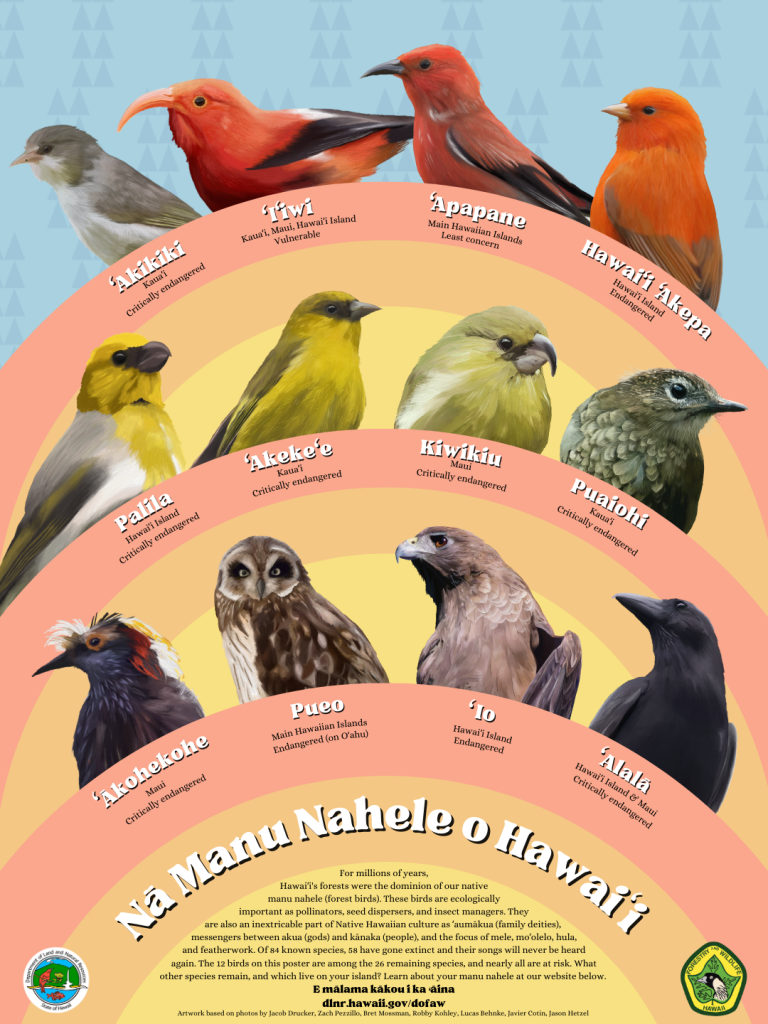
Nā Manu Nahele o Hawaiʻi / Forest Birds of Hawaiʻi
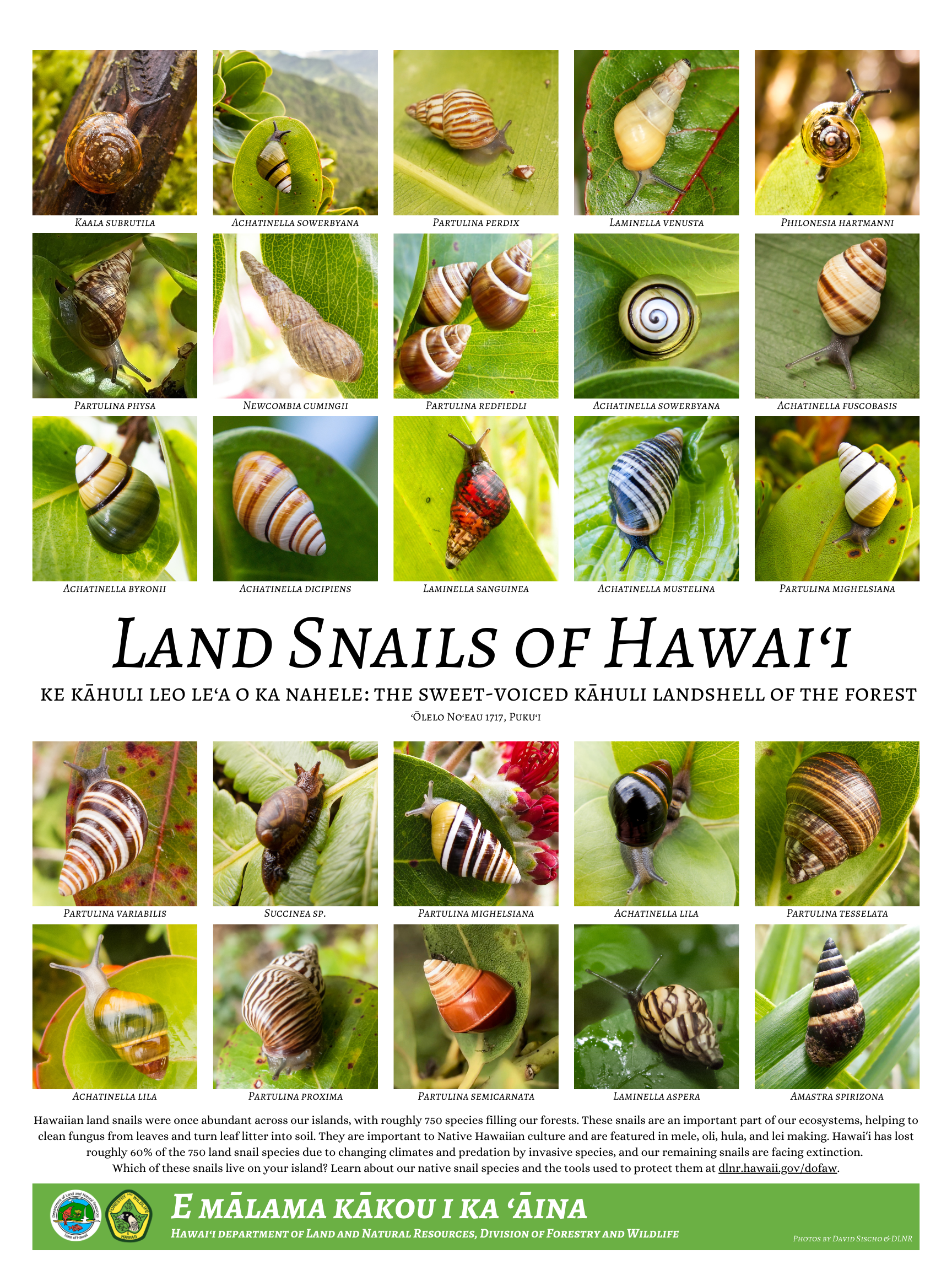
Land Snails of Hawaiʻi
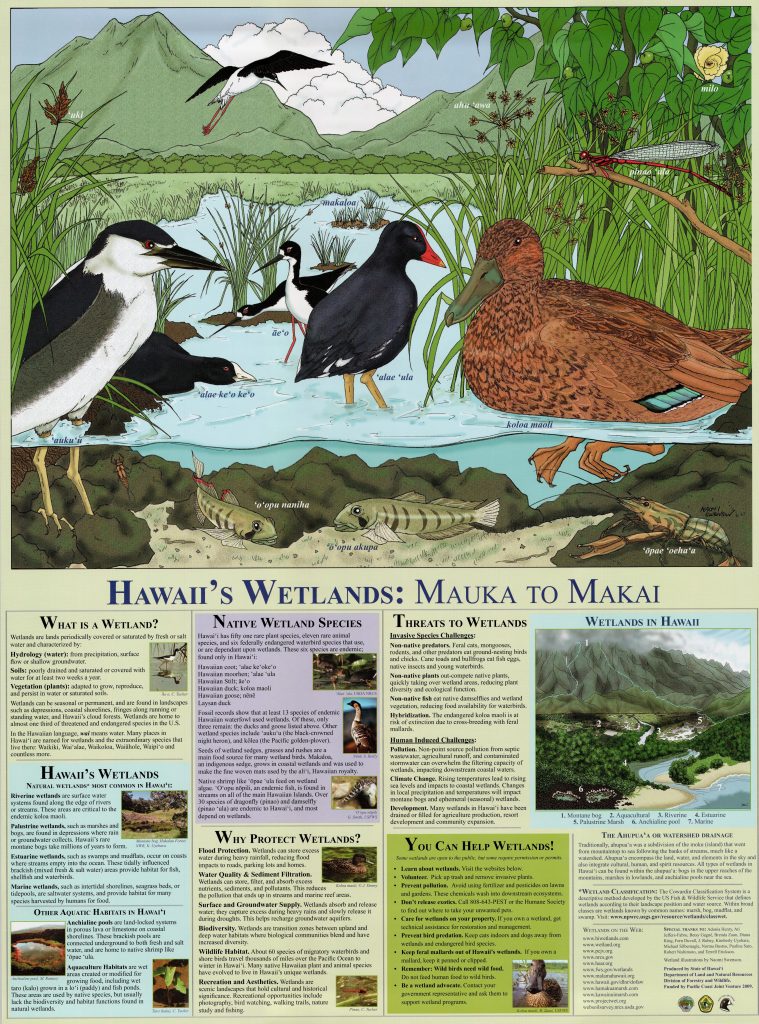
Hawaiʻi Wetlands: Mauka to Makai
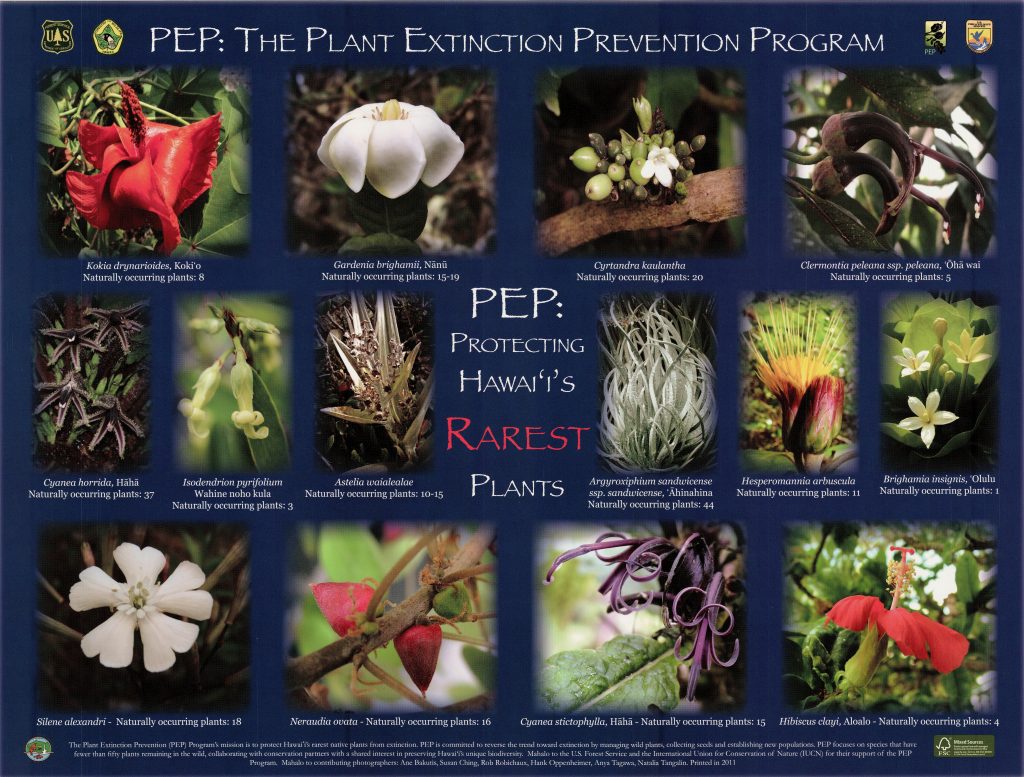
PEP: Protecting Hawaiʻi’s Rarest Plants

Wao Akua: Sacred Source of Life is now available upon request at no cost, with a limit one per person. To order a copy, contact our Forestry & Wildlife outreach program at [email protected].
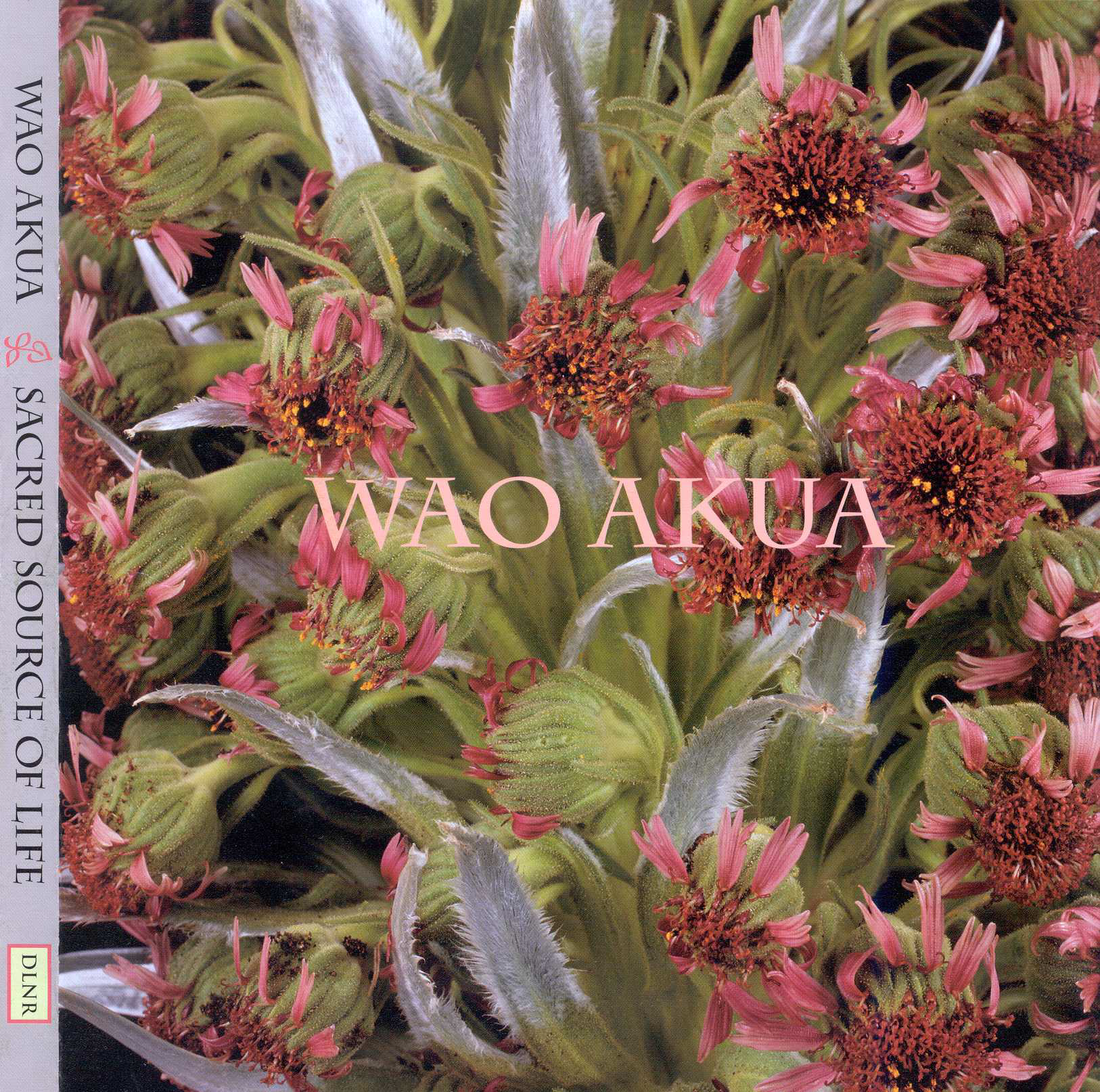
Let’s stay in touch: Sign up for our Educator Bulletin
Educators who want to receive updates on new educational opportunities and products can sign up for our Educator Bulletin. We won’t spam you and will send occasional emails about new posters, virtual field trips, paper crafts, or other products for your classroom.
